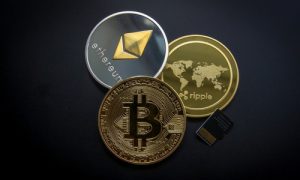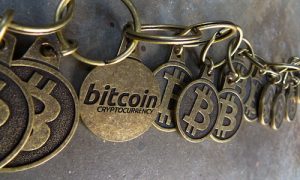In 2009 Bitcoin was the first cryptocurrency to hit the market. Coinmarket.com shows all of the existing cryptocurrencies today, with the most popular one, Bitcoin valued at the most. Ethereum, Dash and Litecoin are other popular virtual currencies that miners are profiting from. Cryptocurrency mining can be a good business story for journalists to tie in with computer technology.
Mining Cryptocurrencies
Mining is becoming the thing to do for people wanting to make money in cryptocurrency without necessarily buying it. What miners do is essentially find cryptocurrency transactions and verify them. Mining is made possible with 2 pieces of hardware; through GPU mining or ASIC mining. A GPU is a graphics processing unit and ASIC is short for application specific integrated circuit. This is the hardware needed for mining to acquire the speed needed to find transactions and verify them to be added to the block chain.
GPU Mining
You may have heard of the term CPU (central processing unit). Every computer has a CPU that essentially carries out the computer’s functions. CPUs are not sufficient enough to run cryptocurrency mining operations on a computer, which is why GPUs are used. A GPU, or graphics processing unit is a small component generally inside a graphics card that in contrast to CPUs, processes only graphics information and does it a lot faster than the CPU because it only has one job.
ASIC Mining
ASIC, or application specific integrated circuit essentially does the same thing as a GPU but is designated for the specific purpose of mining for bitcoin and other cryptocurrencies and does a much better job than GPUs. Advancements in technology like ASICs have made crypto mining more efficient, but unfortunately still consumes lots of energy.
Blockchain
Blockchains are a que of all cryptocurrency transactions in chronological order. Blocks, which miners look for, are added to the chain when a transaction is completed. The miner that gets to the block first and verifies the transaction, gets paid (in the currency that the person is mining) for his or her services.
Mining Spaces
People like Dustin Pennington, the owner of rekt mining, are tackling the crypto currency craze by another angle. Since mining can get costly and running mining rigs radiate a lot of heat, selling space with the necessary electrical infrastructure to miners is another way to make money. In this instance miners pay a host a rate per Kilowatt(kwh) hours to do their mining in the facility rather than at home. Rekt mining is an example of a host selling space for miners.
Cloud Mining
Cloud mining is when clients purchase a certain amount of hash power for a fee. Hash power, or hash rate is defined as the amount of power it takes to run a currency’s networking.
Energy Usage in Mining
As cryptocurrency mining grows in popularity, energy consumption is sure to be a highly reported topic. Energy consumption is already creating a stir in some places, for example, in Iceland, where an influx of miners are taking their operations and causing a shortage of power.
GPU Market
PC gaming has exploded in the last few years and has overtaken console gaming, giving Xbox and PlayStation a run for their money. Although gaming and crypto mining are different, both highly demand the coveted graphics processing units and other processing hardware. Given the explosion of people getting into mining, the price of graphics cards and processing units has risen. Some brands like Intel and Nvidia and have seen rises in stock. NVIDIA stocks doubled in value since the beginning of 2017 and bitcoin’s value never went above $1500 until May of the same year.











